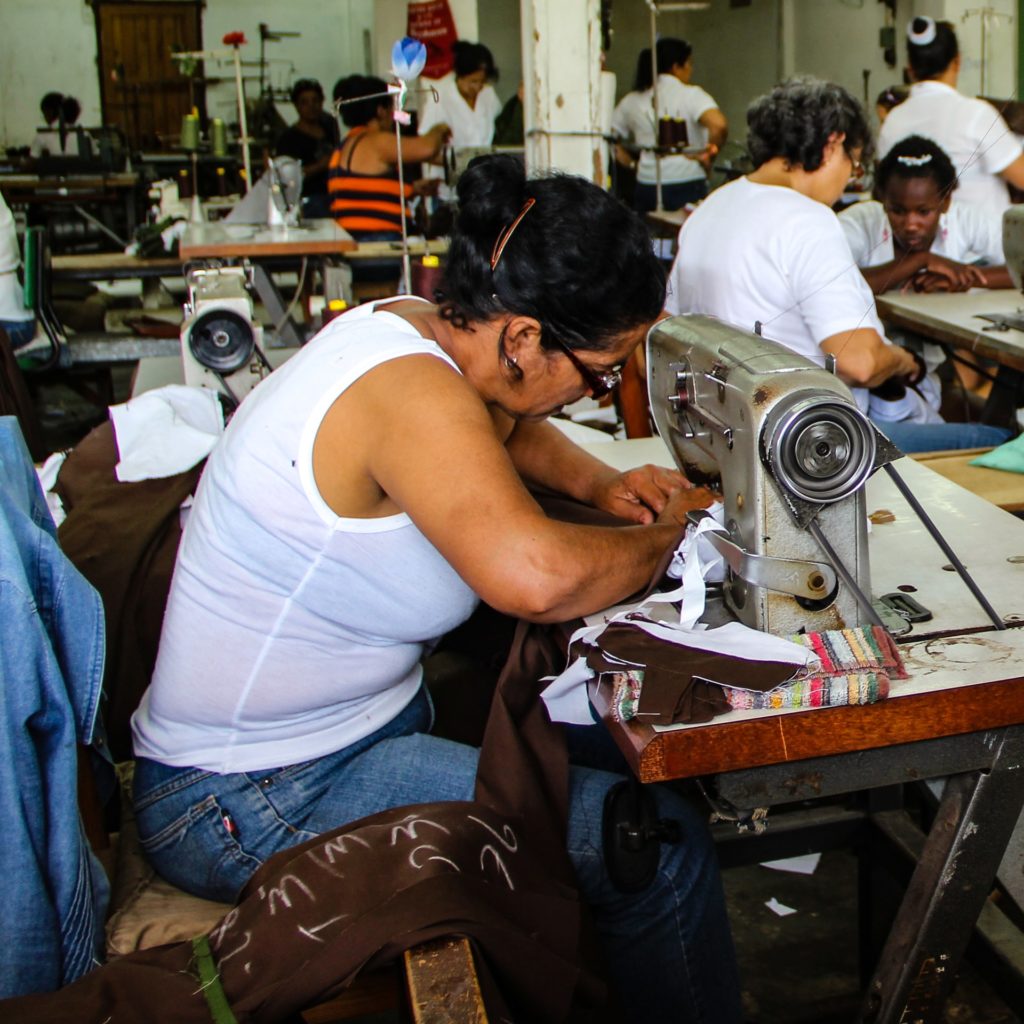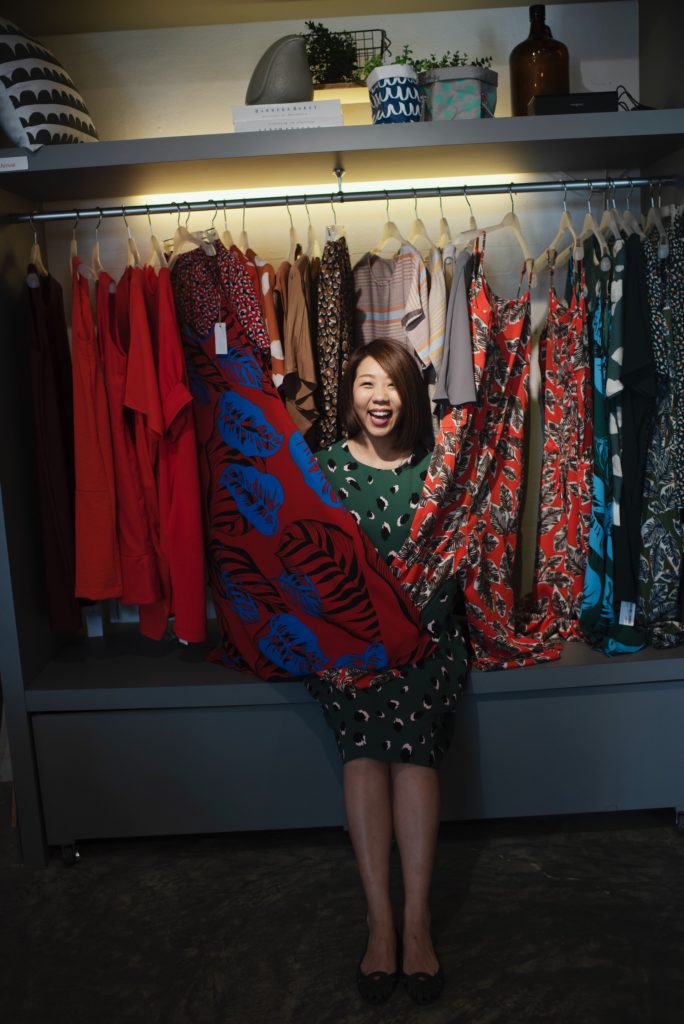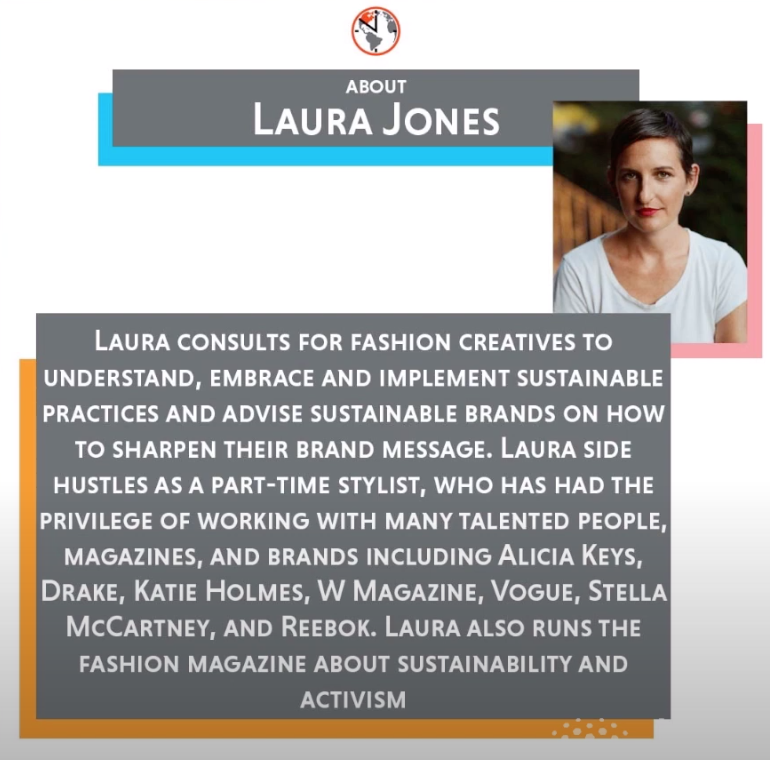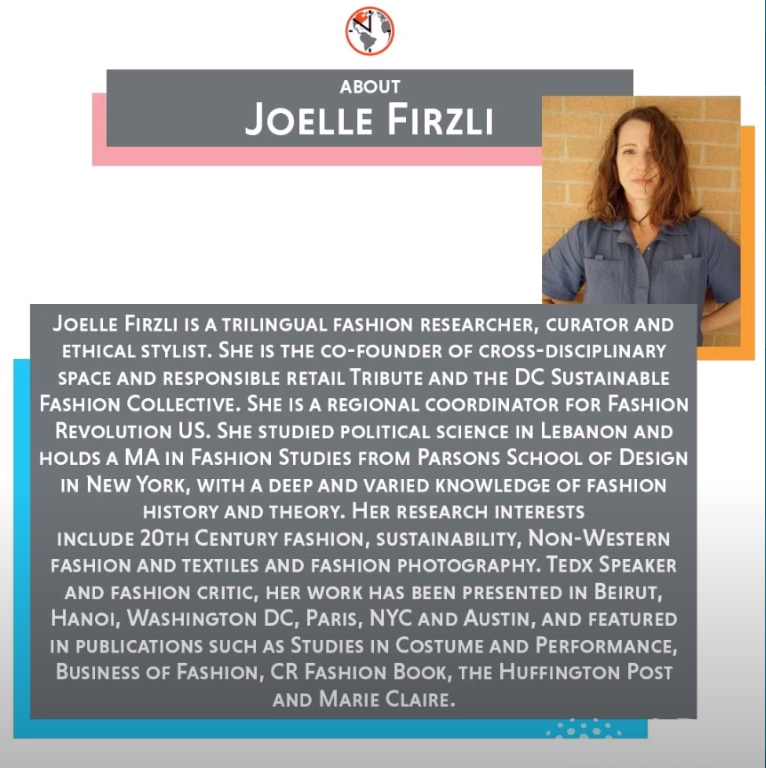Fast Fashion: Ditch the Trends and Go with Everlasting Style
Fast fashion. Orlando Zero Hour, an intersectional youth climate organization saw that with people working from home and isolated from one another, was a ripe time to launch an educational campaign. So they did just that, starting Project Reuse and Reduce, which strives to teach Orlandoans on sustainable initiatives. They held a four-part series of discussions, and on Friday, July 10, IDEAS For Us hosted the Fast Fashion discussion, with a strong group of panelists. Fast Fashion is defined as: inexpensive designs that move quickly from the catwalk to stores to meet new trends. Impacts of fast fashion include air pollution, water pollution, and labor exploitation.
The panelists have backgrounds in professional fashion designing, ethical styling, fashion marketing and branding, all with fashion sustainability advocacy backgrounds. Stacey Oliver is the owner of a sustainable fashion consultancy, Owner of Garment Hub, which has prevented hundreds of pounds of garments from going to the landfill. Natahlia Castrillon, whose brand is Nathalia JMag, is a fashion designer who has participated in Helsinki Fashion Week, which Vogue Magazine called the First Sustainable Fashion Week. Laura Jones has worked with brands and people including Vogue, Stella McCartney, and Drake working as a stylist and fashion consultant. Joelle Firzli is a fashion researcher, curator and stylist who has her MA in Fashion Studies from New York’s Parsons School of Design.
Let’s dive into the discussion and what this group of powerhouse sustainable fashionistas, had to say on the topic.
First question: What immediate reforms need to be made within the fashion industry?
The panelists largely focus on two main topics that the fashion industry needs to address: paying garment workers fair wages both locally and globally and creating robust and transparent systems of measuring carbon greenhouse emissions. Oliver says that when workers are paid a fair wage, then everything in turn, becomes much more sustainable. A fair wage means brands will not have the budget to overproduce garments, so there won’t be excess production. There would be cuts on transportation costs, new things would have to be restructured in order to keep going. Essentially, a domino effect would come into place.
Firzli agrees and adds on that Remake, an NGO focused on labor work, has started an initiative called #PayUp, in the wake of garment factories closing in the wake of COVID-19. According to Remake, “COVID-19 has ravaged garment makers around the globe with a majority of fashion brands canceling orders after a constriction in retail sales during the months of March and April. The result of this has caused millions of garment makers to be left unpaid for work they had already completed.” The latest information on the #PayUp initiative is that “21 brands have committed to pay in full for orders completed and in production. It is estimated that the #PayUp campaign has unlocked an estimated $1 billion for suppliers in Bangladesh and $22 billion globally.”

Laura agrees that paying workers fair pay is a needed reformation, but so is keeping quantitative data on carbon and greenhouse emissions. Jones says “Fashion companies really need more robust and transparent systems of measuring carbon and greenhouse emissions. Right now it is very rare for a fashion brand to have a grasp of what their emissions are. To my knowledge, this is not regulated.” The fashion industry hopes to reach zero carbon emissions by 2050, but Jones questions how this is even possible with no data on the current emission outputs.
She believes the only way to actually do that is to collect data to “swiftly and justly cut the carbon” and to hold these brands accountable to achieve their goals. Castrillon agrees with Jones and believes global regulations should be put into place since there is a global fashion economy. She specifically mentions needed regulations on waste production and waste management, including taxes, penalties, and holding them accountable. Why waste production and management? Because that is where many brands create a lot of carbon emissions: how they get rid of unsold stock. Fast fashion stores may donate their unsold clothes. But most of them either send the surplus directly to landfills or else burn it (Burberry burnt their clothes until 2018, after it was reported that they burnt their clothes(1)). Burning those clothes creates a lot of pollution, and it isn’t regulated.
Question Two: How can we push brands to be transparent with their consumer?
The panelists agree: transparency doesn’t necessarily mean sustainable, nor does it happen overnight; standards can act as examples, and the consumer putting their money to brands and companies with practices they value drives change.

For this, the panelists say that establishing the definitions of transparency, sustainable fashion, and ethical fashion is needed. This can partly be accomplished by standardized regulations, not just a plethora of different certifications with their unique set of rules. Firzli believes that “Each country has differences, but we need to look at a universal definition of transparency, have standardized regulations, and a standardized index on how to rate transparency.” Having a brand be transparent doesn’t mean they are sustainable, especially if there are no regulations in place. Firzli mentions that Fashion Revolution’s transparency index of brands is a good way to start – but first, there needs to be a concrete, universal meaning on what transparency and ethical or sustainable fashion
Adding to this, Oliver points out that brands and companies can lead by example. She says if something like the Kering company, which owns Gucci, Saint Laurent, Bottega Veneta, to name a few, were to set a standard of what sustainable fashion looks like in terms of hard numbers. Oliver believes that by doing this would incite something like a click moment (which spurs exponential growth of events), and brands would follow suit, not wanting to look bad in comparison. But Jones mentions that it is also important to make sure the word sustainable isn’t meaningless. She thinks “it’s about there being a really good strong connection between data and research – there’s a lot of good ideas about how to be sustainable, but we aren’t sure if they actually are, so, we need to have systems of data, and a form of accountability to see if they are being implemented, and transparent communication about that.”
Castrillon says that a way that transparency can happen is through customers asking questions “Customers can email, or post on social media to their favorite brands saying “hey I want to know how it was made, where it was made, or who made it was being paid a fair wage.” I think consumers putting these brands on the spot can really help push forward the sustainability agenda.” Transparency is the bare minimum, and a way to get it is for the consumers to push for it.
Question Three: What is sustainability vs ethical in regards to production practices?
The panelists believe the two go hand-in-hand. But to break it down, Oliver delivered this definition: “Sustainable is people, planet, and profit. And those three things go in an equilateral triangle where none are more important than the other. So typically sustainability is keeping those things in balance so we can continue to have the business and continue to have those resources (cotton, plants for dyes) and continue to keep doing what we are doing. Ethical is very similar, still people, planet, profit…Ethical fashion or ethical anything is doing what is right. Focusing on labor rights and animal cruelty or testing – doing things that are inherently good for the planet and people…Sustainability more longevity, ethical more about the betterment of the planet.”
Jones brings up the issue of longevity, and how sustainability is centered on lowering those greenhouse emissions. As the planet gets hotter, we become resource-strapped. At the same time, our population becomes denser, “I tend to think of sustainability in terms of bringing down those carbon emissions because it is a tangible thing. But that can only happen if businesses are sustainable while being profitable and continue to run. I think the ethical side of it is really crucial.” She points out that sometimes in the quest to be sustainable, “very drastic actions that are unjust and unfair are taken,” sacrificing ethical practices.
And it isn’t just the industries: Firzli points out that it isn’t just growing, producing, selling. It is about the whole lifecycle of a piece of clothing. Consumers can recycle clothing. Designers can use upcycled fabric, or a fabric that can disintegrate, or the new fabrics on the market that are made of trees, like Lyocell.
Castrillon puts it this way: “A truly sustainable brand is ethical and a truly ethical brand is sustainable. They definitely go hand-in-hand.”
Castrillon mentions that there are likely brands that are using sustainable textiles, but using questionable labor. Or perhaps are ethical, but using polyester. To accomplish both, she urges a focus on people. Castrillon imagines a scenario with someone saying “we need to cut down on carbon emissions, so everyone needs to not have a child, and everyone needs to have an abortion or something.” This is why a just transition to sustainable fashion is needed: ethics and sustainability may slightly differ, but they are intertwined.
Question Four: How do we combat color washing and recognize those standards that some brands are taking?
Sustainable Fashion Matters defines color washing as an umbrella term in which brands market themselves as taking ethical practice and standards into their practice without following through.
The panelists agree that this is a big question, which can be answered by education and pressure campaigns. The consumer has a lot of power here, and as Castrillon says ‘the best way is hitting them where it hurts, and that is with money. Don’t buy from a brand that color washes. For example, I noticed that right after the Black Lives Matter movement blew up, on Instagram you see white women, white women, black square, then black woman, black woman, but if you scroll all the way down, you don’t see any other black woman. If a brand is doing something like that, unfollow them, don’t give them your money, give to slow fashion, sustainable brands.” Oliver believes that positive action can work, too. By supporting a business that does the work we believe in, that will show other brands that they need to step up as well.

Another key player is education, both within the industry and from the consumer. Jones says there “needs to be better regulation or some description of misleading campaigns or giving the consumer misinformation…it comes down to understanding as best as you can about the brand…and pressure on the brand to be upfront and transparent.” Firzli brings up that it seems like the industry may be moving in the direction, and hopefully for the long term. She mentions that big brands are talking about professional development and taking classes on diversity and the environment.
Firzli realizes that “Fashion is all about change, but we are asking for it to slow down just a moment for the environment and people who work in that industry.” Brands may be becoming more and more educated but the only real way it seems to affect change, according to the panelists, is first and foremost through the consumer.
Question Five: Could we talk about other fabrics on what environmental damage they exert?
The consensus? The most harmful are polyester textiles fabrics, so they are plastic and petroleum-derived. They will likely outlive all of us. Castrillon took this question on and explained that polyester was invented in the 1970s, so we are still not sure how long it will exist for. Even vintage clothing is a danger, as it is rich in polyester. She also points out that dyes that are used in textiles do a lot of environmental harm when they end up in a landfill. There are a lot of brands and manufacturers out there that are adapting a closed-loop system for dyeing, meaning the dyes won’t end up in rivers. However, dyes are still on the textiles that we place on the body.

She then moves on to take on fake leather. Castrillon says “ethical fashion loves vegan leather but not all vegan leather is created equal.” There are innovations in fake leather, such as Piñatex, which is made from pineapple. But fake leather is typically made from polyester, which she urges to stay away from. Castrillon does encourage people to buy natural textiles like linen or cotton, which is better for your skin, water, and the planet.
Oliver points out that it is really difficult to figure out what is okay, and what isn’t and that there are problems with everything. She says “if you are a regular consumer and you are trying to do the right thing but don’t have a lot of knowledge, invest in high quality, the highest you can afford, take good care of them make sure you are buying things that fit you perfectly so you want to wear them, and wear the crap out of them, wear them until you can’t. That might be the best approach because there are so many complications.” Firzli agrees but adds not to throw them away, especially if it is polyester. Also, it is important to think about how you wash polyester. Firzli says “If you do have polyester, either wash by hand, or a washing-bag, like the Guppyfriend Washing Bag,” which will collect any microplastics, instead of it going straight in the water. So stick with natural fibers, high quality, and wear them until they aren’t even recognizable as clothes.
Question Six: We actually have a question from one of our viewers: Can you guys give us some examples of clothing brands that are ethical and high quality?
- I am going to shamelessly plug myself! My brand is Nathalia JMag, I make sustainable clothing and I make it myself, it is made to order and size customizable.
- Mara Hoffman – gorgeous high-quality stuff
- Grind and Glaze – make amazing, comfortable clothes
Firzli:
- I am not a brand, but I only work with brands that pass my screening. I work with Back Beat Co. They also take bags of products and recycle them if I don’t sell them, which closes my own loop.
- Mexican brands are doing a very good job, using recycled materials and a lot of linen.
Jones:
- New Zealand designer Maggie Marilyn. She does really great pieces that you’ll have forever.
- Elk the Label. They have a sustainability report on their website and if you are new to sustainable fashion, it is a good resource to look at.
- Patagonia. They are not sustainable in how they make everything but they are heavily involved in lobbying the government, as that is essentially a very important piece of the puzzle in moving forward with sustainable fashion.
Oliver:
- Patagonia and Stella McCartney are the two big powerhouses of the movement right now.
- The Good On You app can be used to look up your favorite fashion brands on where they are at with environmental impact, animal cruelty, and things of that nature. They will rate different brands and you can see what they are doing, with descriptions of each brand. You can also search for products, and a list of brands organized by ratings, so you can start looking with brands that are more sustainable.
Question Seven: Some countries, especially in Europe have taken actions and pieces of legislation to make sure brands are accountable and there are regulations. So what roles can consumers have in demanding those things here, in the US?
Currently, there isn’t any legislation in the US that would support a sustainable fashion agenda. Which needs to change. Jones believes in the power of the people to keep pushing and demanding the government to a just transition to green energy. She says that if all industries were to cut carbon emissions, that would be a major shift with everything. Jones advocates for dressing fabulously and to write a letter to your representative to demand change, or in support of the Green New Deal. It’s something that all citizens can do on a continuous basis – lobbying our own government.
For the last question of the evening, what are the takeaways when thinking about sustainable fashion?
Castrillon: “I think it is important to take stock of what you already own. The most sustainable product there is is the one that is already in your closet and possession. Are there things you can upcycle (with a seam ripper, scissors) and which you can turn a dress into a top, jeans, into shorts? See what you already own and figure out different ways you style. You can also swap: with friends, at a party, mom, family, friends. Buying secondhand fashion, vintage clothing, or buying from Poshmark and Real Rio. Sustainable Fashion is a journey, and not a destination. You have power with your dollar. Just keep wearing what you already have.”
Oliver: “I agree and adding on, within that learn about yourself and your personal style. That will help you utilize the garments you already own and will help you shop better. There’s this line that “trends are so last season” trends is so passe, and we need to move beyond trends. We need to learn about ourselves of what we like, what fabric we like, what works for our daily lives. COVID-19 shows us that trends don’t matter. Know your personal style, don’t let Kardashians or brands tell you what to wear. You figure it out. When you do, you will want to wear your garment for longer. So know your brands and measurements, yourself and personal style.”

Jones: “I think that is such a good point. I, unfortunately,spent a decade telling you what to wear but the same people who are disseminating trends are slightly miserable being held to them. The joy of dressing is exactly the point of establishing and finding your personal style is uplifting for the soul and good for the planet. I had to unlearn a lot of ideas about having the newest and latest, a lot of outdated ideas about what a nourishing relationship with clothes. It has been a freeing and liberating experience. I have never meant anyone who loved switching trends every two weeks. COVID-19 is the perfect time playing around with different outfits and styles from your closet and see how you feel wearing it.”
Firzli: “I think that it is important to understand historically fashion was never supposed to be fast, but displayed slowly. It was never supposed to be a fast industry. It was slow, made in house, and recycling was very common. For me, fashion matters and it is not a superficial industry. You can understand humans through fashion. Clothing is more than just textiles. There is a lot of association with clothing, and the fashion industry feeds into, but you need to break out to if. I think the fashion cycle is going back to two seasons. Gucci has already taken the trend out of their vocabulary. Love your clothes, and they will give more than they already are.”
If you are ready to take a step forward within the sustainable fashion world, check out the links below and watch the complete discussion in the video, below. Be sure to follow Orlando Zero Hour for more environmental actions, on their Instagram.
Featured image: Hannah Morgan on Unsplash
Factory worker photo: fran hogan on Unsplash
Factory photo: Patrick Hendry on Unsplash
Fashion activism signs: Cherie Birkner on Unsplash
Pineapple photo: Brooke Lark on Unsplash
Woman in closet photo: BBH Singapore on Unsplash
https://idlewildwoman.com/collections
http://www.stellamccartney.com
(1) https://www.nytimes.com/2018/09/06/business/burberry-burning-unsold-stock.html












